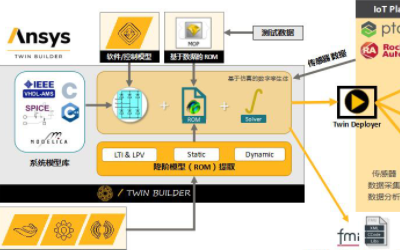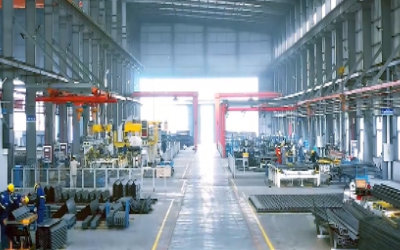Effective medical waste disposal a major priority
New-era smart technologies will help China deal with the mounting waste disposal challenges arising from the rapid development of the healthcare sector and greater consumption of medical products after the COVID-19 epidemic.
At a public hospital in Beijing, a bright yellow cart catches the eyes of passersby. The cart is used to collect and sort medical waste. With a few clicks, medical waste can be collected and sorted into bags quickly. Labels then protrude from the apparatus allowing hospital workers to properly categorize each bag. The intelligent cart can also have added features like facial recognition, even with staff donning masks, goggles and head coverings.
A decade ago, hospital cleaning staff could only count on existing sewage and waste management systems, and all forms and labels had to be written and collected manually.
Medical waste refers to all byproducts generated from a patient's hospital-related experience, including during diagnosis, treatment and recovery.
With the development of China's medical science and technology sector, the type and amount of disposable medical supplies have skyrocketed, resulting in continuous increases in the country's medical waste. Last year, COVID-19 began sweeping the globe, increasing medical waste including spent medical supplies such as masks, gloves and protective gowns.
According to data from Shenzhen, Guangdong-based research firm AskCI Consulting, in 2020, China's newly added medical mask waste totaled 162,000 metric tons. Together with other newly generated medical waste, the total weight surged by over 25 percent over 2019.
As medical waste has characteristics of direct or indirect infectivity and toxicity, it must be treated properly through processes including classification, disinfection and elimination.
AskCI said that in 2020, China's medical waste management market reached 6.7 billion yuan ($1.04 billion). The market is expected to approach 12 billion yuan by 2025.
Zhang Min, general manager of the emerging business department of Beijing-based PingAn-Lenovo Smart Health Information Technology Ltd-developer of the yellow medical waste management carts-said: "China's development of medical waste management has experienced three eras. Back in 2000, when hospital cleaning staffs finished medical waste sorting, they had to fill out labels and forms manually. Then in 2019, the sector entered the 2.0 era, where cleaners were able to submit waste-related information via digital terminals, increasing waste management efficiency."
However, he noted that the data input methods, such as scanning and card-reading, raised requirements for cleaners, and some operations were not sufficiently user-friendly.
"And now, we are at the 3.0 era, where smart technologies are empowering medical waste treatment. For example, to help cleaners negotiate the system, the smart cart sends out audible alerts such as: 'We are now in the hematology department'."
In addition, each of the five types of medical waste, such as infection and pathogen-related types, will be marked on the screen by different colors.
"The screen enables gloves-on operations, and to simplify procedures, each step on the screen can be completed with just two clicks," Zhang added.
On March 5, the country's Government Work Report explicitly mentioned that the collection and treatment of hazardous medical waste should be strengthened.
Ten days later, the National Health Commission issued a guidance on building a graded assessment system of smart hospitals to evaluate their degrees of digitization, and intelligent waste management was among the assessment criteria.
And the issue has become especially vital during the pandemic. Official data showed that when COVID-19 broke out in China, there were 22 cities whose medical waste management systems were overloaded, and 28 others were nearly at full capacity.
Zhao Qunying, director of the emergency management office of the Ministry of Ecology and Environment, said that to handle the supply gap of medical waste management, enhancing facility construction and improving standardized supervision are fundamental solutions.
A revolution in medical waste management with quicker response times, more sophisticated planning and better treatment is on the way, Zhao said.
Industry experts said that for domestic smart medical waste management technology solution providers, in addition to serving the country's medical institutions, exporting their products overseas might be another good option.
Data from India's Center for Science and Environment showed that ever since the pandemic broke out in India, daily newly added medical waste in New Delhi surged from 600 tons before the contagion to 700 tons, said a report from India Today.
China's medical waste management carts can be exported to these countries in need to save more lives, industry experts said.
A decade ago, hospital cleaning staff could only count on existing sewage and waste management systems, and all forms and labels had to be written and collected manually.
Medical waste refers to all byproducts generated from a patient's hospital-related experience, including during diagnosis, treatment and recovery.
With the development of China's medical science and technology sector, the type and amount of disposable medical supplies have skyrocketed, resulting in continuous increases in the country's medical waste. Last year, COVID-19 began sweeping the globe, increasing medical waste including spent medical supplies such as masks, gloves and protective gowns.
According to data from Shenzhen, Guangdong-based research firm AskCI Consulting, in 2020, China's newly added medical mask waste totaled 162,000 metric tons. Together with other newly generated medical waste, the total weight surged by over 25 percent over 2019.
As medical waste has characteristics of direct or indirect infectivity and toxicity, it must be treated properly through processes including classification, disinfection and elimination.
AskCI said that in 2020, China's medical waste management market reached 6.7 billion yuan ($1.04 billion). The market is expected to approach 12 billion yuan by 2025.
Zhang Min, general manager of the emerging business department of Beijing-based PingAn-Lenovo Smart Health Information Technology Ltd-developer of the yellow medical waste management carts-said: "China's development of medical waste management has experienced three eras. Back in 2000, when hospital cleaning staffs finished medical waste sorting, they had to fill out labels and forms manually. Then in 2019, the sector entered the 2.0 era, where cleaners were able to submit waste-related information via digital terminals, increasing waste management efficiency."
However, he noted that the data input methods, such as scanning and card-reading, raised requirements for cleaners, and some operations were not sufficiently user-friendly.
"And now, we are at the 3.0 era, where smart technologies are empowering medical waste treatment. For example, to help cleaners negotiate the system, the smart cart sends out audible alerts such as: 'We are now in the hematology department'."
In addition, each of the five types of medical waste, such as infection and pathogen-related types, will be marked on the screen by different colors.
"The screen enables gloves-on operations, and to simplify procedures, each step on the screen can be completed with just two clicks," Zhang added.
On March 5, the country's Government Work Report explicitly mentioned that the collection and treatment of hazardous medical waste should be strengthened.
Ten days later, the National Health Commission issued a guidance on building a graded assessment system of smart hospitals to evaluate their degrees of digitization, and intelligent waste management was among the assessment criteria.
And the issue has become especially vital during the pandemic. Official data showed that when COVID-19 broke out in China, there were 22 cities whose medical waste management systems were overloaded, and 28 others were nearly at full capacity.
Zhao Qunying, director of the emergency management office of the Ministry of Ecology and Environment, said that to handle the supply gap of medical waste management, enhancing facility construction and improving standardized supervision are fundamental solutions.
A revolution in medical waste management with quicker response times, more sophisticated planning and better treatment is on the way, Zhao said.
Industry experts said that for domestic smart medical waste management technology solution providers, in addition to serving the country's medical institutions, exporting their products overseas might be another good option.
Data from India's Center for Science and Environment showed that ever since the pandemic broke out in India, daily newly added medical waste in New Delhi surged from 600 tons before the contagion to 700 tons, said a report from India Today.
China's medical waste management carts can be exported to these countries in need to save more lives, industry experts said.








